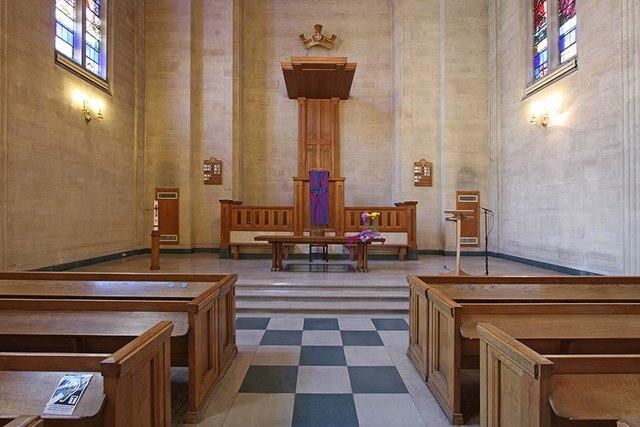St Michael Cornhill
City of London, Greater London
The church lies over the remains of the Basilica, the northern most part of the great Roman Forum built in the first century AD.

The Dutch Church is a reformed church on the site of the 13th century Augustinian friary, the original building granted to Protestant refugees for their church services in 1550 was destroyed during the London Blitz.
City of London, Greater London
The original church was a monastic priory known as the Austin Friars, London, a contraction of 'Augustinian Friars', founded c1253 by Humphrey de Bohun, 2nd Earl of Hereford. The pretender Perkin Warbeck, executed on 23 November 1499 for claiming to be Richard of Shrewsbury, the younger of the Princes in the Tower, is buried in the church. The priory was dissolved in November 1538. In 1550, London's community of 'Germans and other strangers' was granted the use of the friary church's nave; the rest of the church was used as a storehouse, with the monuments sold for £100 and the lead stripped from the roof. The choir, tower and transepts were demolished in 1600.
The nave became the first official nonconformist chapel in England under its Polish born superintendent John a Lasco who had founded a preaching house for a group of Protestant refugees mainly from the Low Countries. The mostly Dutch and French speaking strangers were granted a royal charter on 24 July 1550 that allowed them to establish a Stranger Church and this was incorporated by letters patent from King Edward VI.
By 1570, the Dutch community was the largest group of expatriates in London, numbering 5,000 out of the 100,000 total population of the time. About half of the Dutch in London were Protestants who fled the Flemish Low Countries due to religious persecution. Others were skilled craftsman, including brewers, tile makers, weavers, artists, printers and engravers, who came to England for economic opportunities. Engraver Martin Droeshout, famous for his 1623 portrait of William Shakespeare, was among the Flemish Protestant emigrants who arrived in London. A century later, the arrival of William of Orange brought a second wave of Dutch emigrants to London. This second group included noblemen, bankers, courtiers, merchants, architects and artists.
In the night of 15–16 October 1940, just a decade before the Dutch Church celebrated its 400th anniversary, the medieval building was completely destroyed by German bombs. The church's collection of rare books including Dutch Bibles, atlases and encyclopedias had been moved out of London for safe keeping. Today the collection is housed in the church library and includes a multilingual Bible published by the Plantin Press of Antwerp in 1569-1571, and a 1649 atlas of all the cities in the Low Countries by Willem Blaeu. The church's manuscript collection and original charter are kept in the London Metropolitan Archives. The church's library collection is currently being digitalised and a launch date for the online catalogue of September 2015 has been announced.
The foundation stone of the new church was laid on 23 July 1950 by the 10 year old Princess Irene of the Netherlands. The new church, built to the design of Arthur Bailey, was completed in 1954. The new building is a concrete box frame, externally clad in Portland stone.
City of London, Greater London
The church lies over the remains of the Basilica, the northern most part of the great Roman Forum built in the first century AD.
Marshfield, Gwent
Mae Eglwys St Mair, Maerun, yn eglwys brydferth sy’n dyddio nôl i’r ddeuddegfed ganrif. Yn nythu’n glud yn y llain las rhwng Caerdydd a Chasnewydd, mae bellach yn adnabyddus am fod yn lleoliad ar gyfer un o episodau Dr Who!
Petrisw, Powys
Cyrhaeddir yr eglwys hon trwy deithio naill ai ar hyd lonydd troellog sy’n gyforiog o flodau, neu ar hyd llwybr troed. Wrth gyrraedd, fe welwch yr eglwys ganoloesol hon yn sefyll ar lethrau’r Grwyne Fawr, yn edrych heibio cwm bychan at lethrau Mynydd Pen-y-Fâl yr ochr draw.